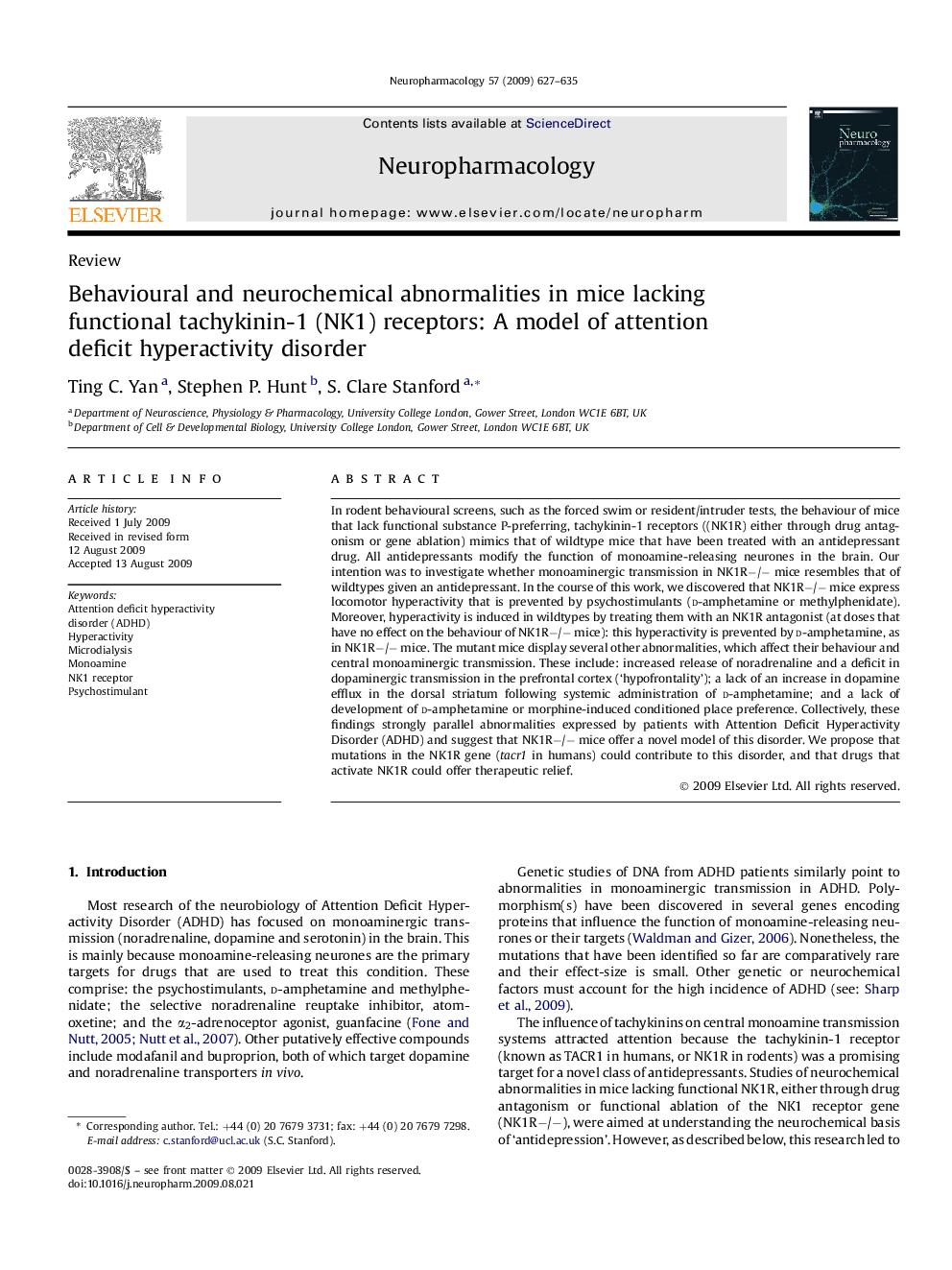| کد مقاله | کد نشریه | سال انتشار | مقاله انگلیسی | نسخه تمام متن |
|---|---|---|---|---|
| 2494348 | 1556659 | 2009 | 9 صفحه PDF | دانلود رایگان |

In rodent behavioural screens, such as the forced swim or resident/intruder tests, the behaviour of mice that lack functional substance P-preferring, tachykinin-1 receptors ((NK1R) either through drug antagonism or gene ablation) mimics that of wildtype mice that have been treated with an antidepressant drug. All antidepressants modify the function of monoamine-releasing neurones in the brain. Our intention was to investigate whether monoaminergic transmission in NK1R−/− mice resembles that of wildtypes given an antidepressant. In the course of this work, we discovered that NK1R−/− mice express locomotor hyperactivity that is prevented by psychostimulants (d-amphetamine or methylphenidate). Moreover, hyperactivity is induced in wildtypes by treating them with an NK1R antagonist (at doses that have no effect on the behaviour of NK1R−/− mice): this hyperactivity is prevented by d-amphetamine, as in NK1R−/− mice. The mutant mice display several other abnormalities, which affect their behaviour and central monoaminergic transmission. These include: increased release of noradrenaline and a deficit in dopaminergic transmission in the prefrontal cortex (‘hypofrontality’); a lack of an increase in dopamine efflux in the dorsal striatum following systemic administration of d-amphetamine; and a lack of development of d-amphetamine or morphine-induced conditioned place preference. Collectively, these findings strongly parallel abnormalities expressed by patients with Attention Deficit Hyperactivity Disorder (ADHD) and suggest that NK1R−/− mice offer a novel model of this disorder. We propose that mutations in the NK1R gene (tacr1 in humans) could contribute to this disorder, and that drugs that activate NK1R could offer therapeutic relief.
Journal: Neuropharmacology - Volume 57, Issues 7–8, December 2009, Pages 627–635